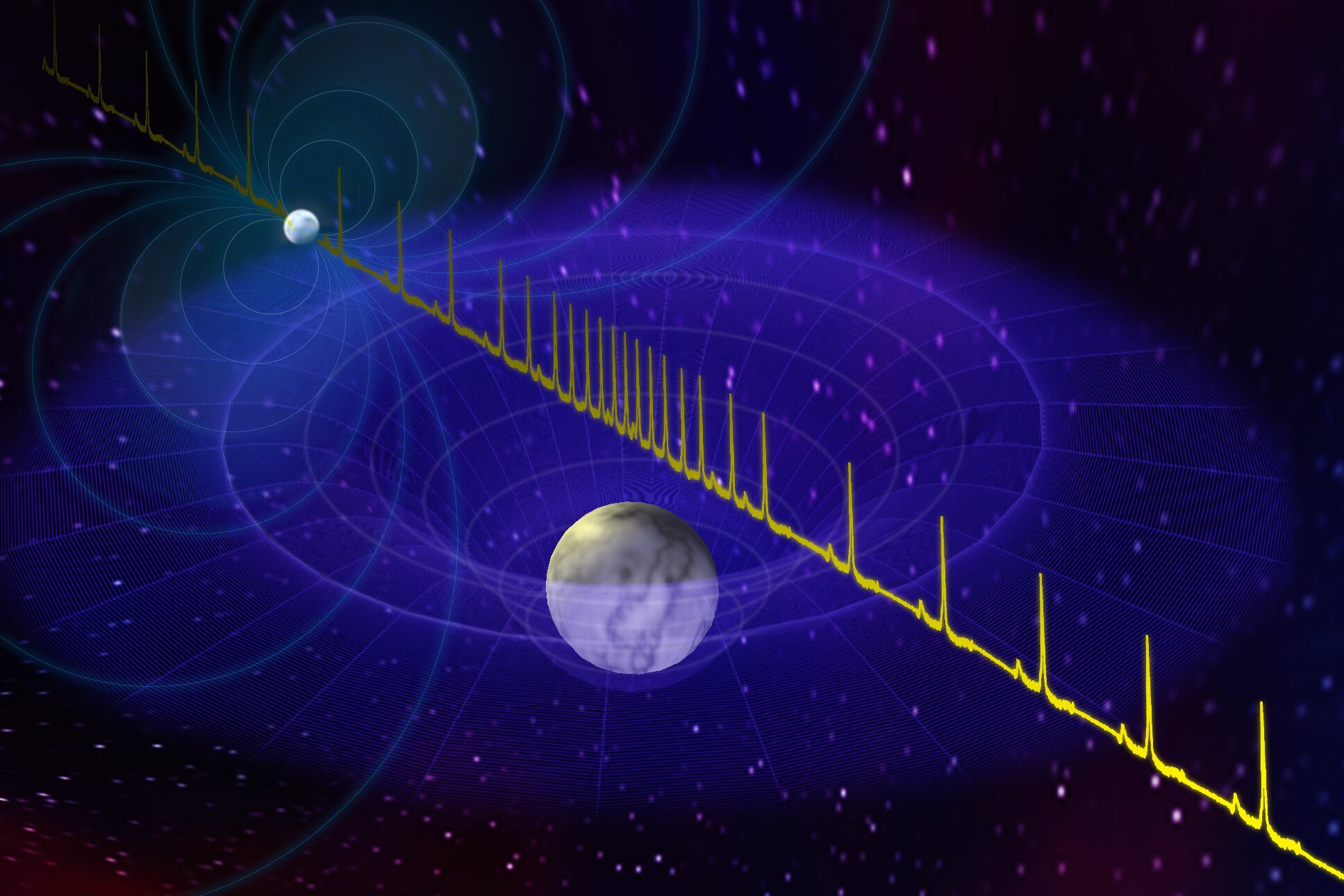
Astronomers at West Virginia University have found the most massive neutron star ever recorded, located about 4,600 light-years from Earth.
The neutron star, which has been dubbed J0740+6620, is exceptionally dense — it’s about 2.17 times the mass of the sun packed into a sphere that’s only 15 miles across. For comparison, the sun is 333,000 times the mass of the Earth.
The researchers discovered J0740+6620 using the Green Bank Telescope in Pocahontas County, West Virginia. They published their findings on Monday, September 16, in the journal Nature Astronomy.
A neutron star is essentially what’s left behind after a star dies and goes supernova. After a star’s core collapses, the protons and electronics “melt” into one another and become neutrons.
“To visualize the mass of the neutron star discovered, a single sugar-cube worth of neutron-star material would weigh 100 million tons here on Earth, or about the same as the entire human population,” West Virginia University wrote in a post about the discovery on Phys.org.
Despite the groundbreaking nature of the discovery, the astronomers weren’t even looking to find an ultra-dense neutron star. Instead, they were on the hunt for gravitational waves emitted from pulsars.
That process is a bit complicated — scientists measure the mass of a neutron star using the “Shapiro Delay” phenomenon. Basically, the space around the star is warped due to its high gravitational pull. Pulses from a pulsar need to travel farther through that warped space, which takes them more time. That delay tells scientists how dense a neutron star is.
“These stars are very exotic,” said Maura McLaughlin, Eberly Distinguished Professor of Physics and Astronomy at West Virginia University. “We don’t know what they’re made of and one really important question is, ‘How massive can you make one of these stars?’ It has implications for very exotic material that we simply can’t create in a laboratory on Earth.”
Scientists have been able to use gravitational waves to make several discoveries about neutron stars recently, including a pair of them smashing together to create a massive “kilonova.” Scientists believe that a similar kilonova — one that happened about 4.6 billion years ago — might have been the source of gold and platinum on Earth.
Editors' Recommendations
- Astronomers are figuring out what causes incredibly bright flashes in space
- James Webb captures image of the most distant star ever discovered
- Hunting for evidence of the first stars that ever existed
- Hubble smashes record for most distant star ever seen
- Astronomers catch the destruction of a red supergiant star in real time




